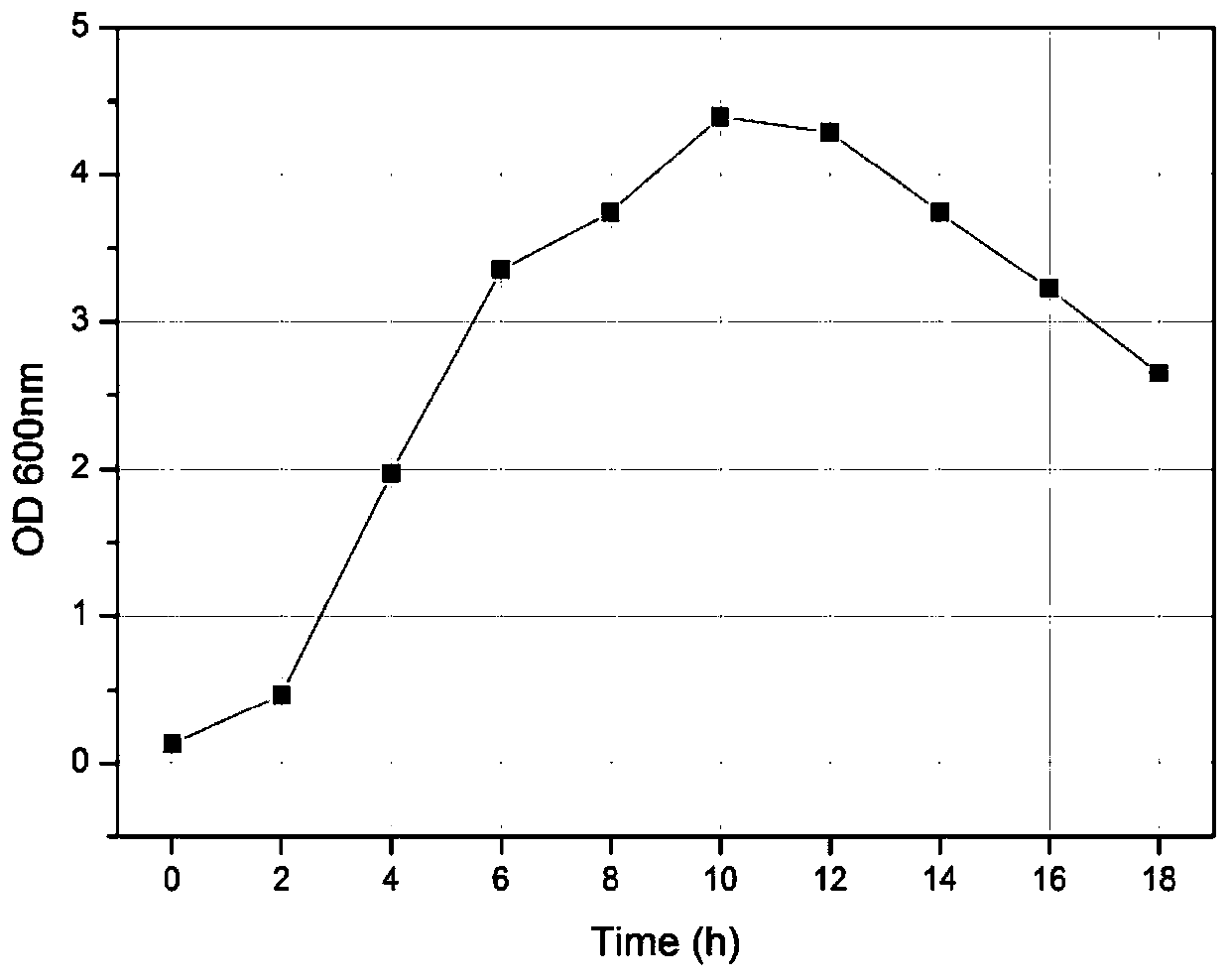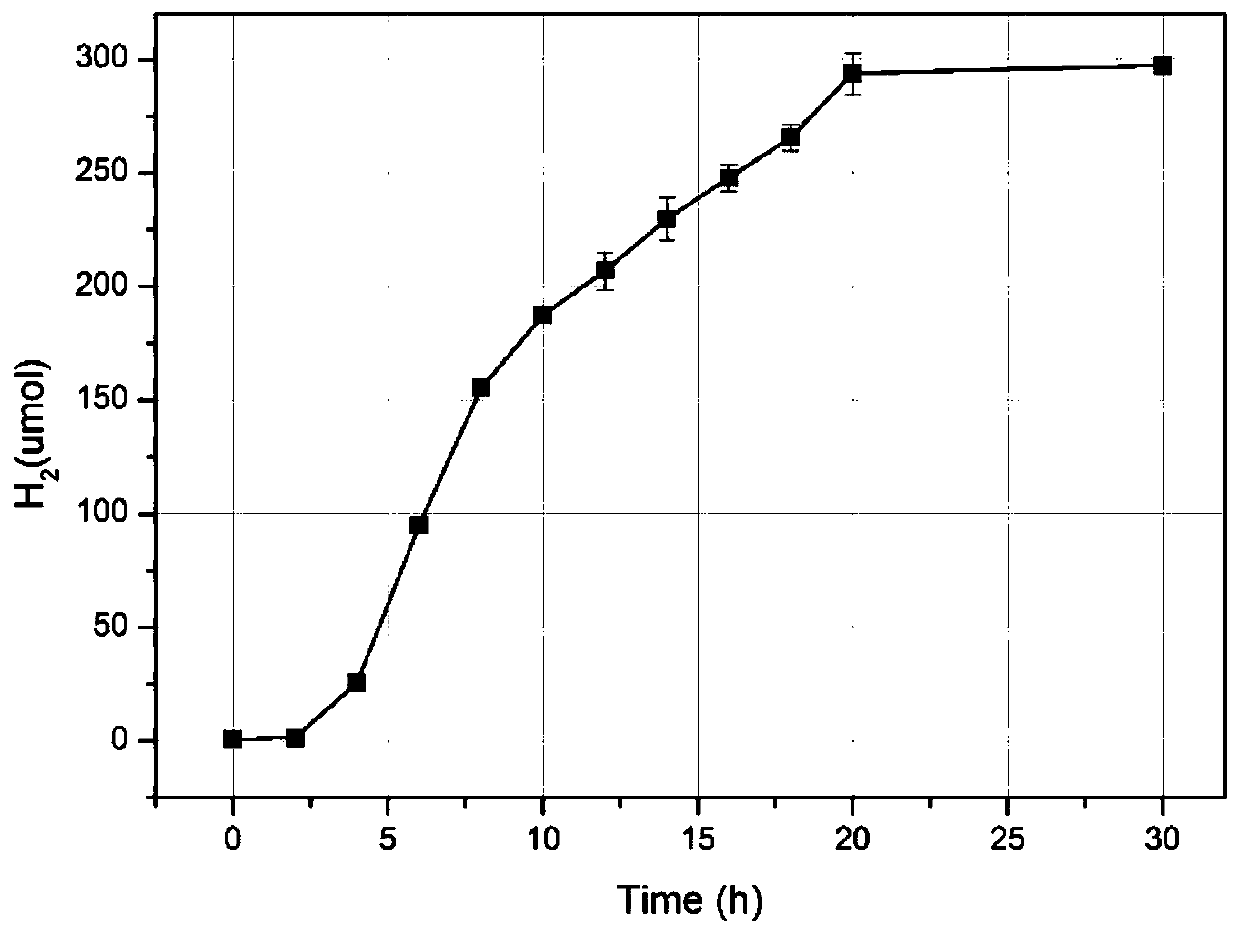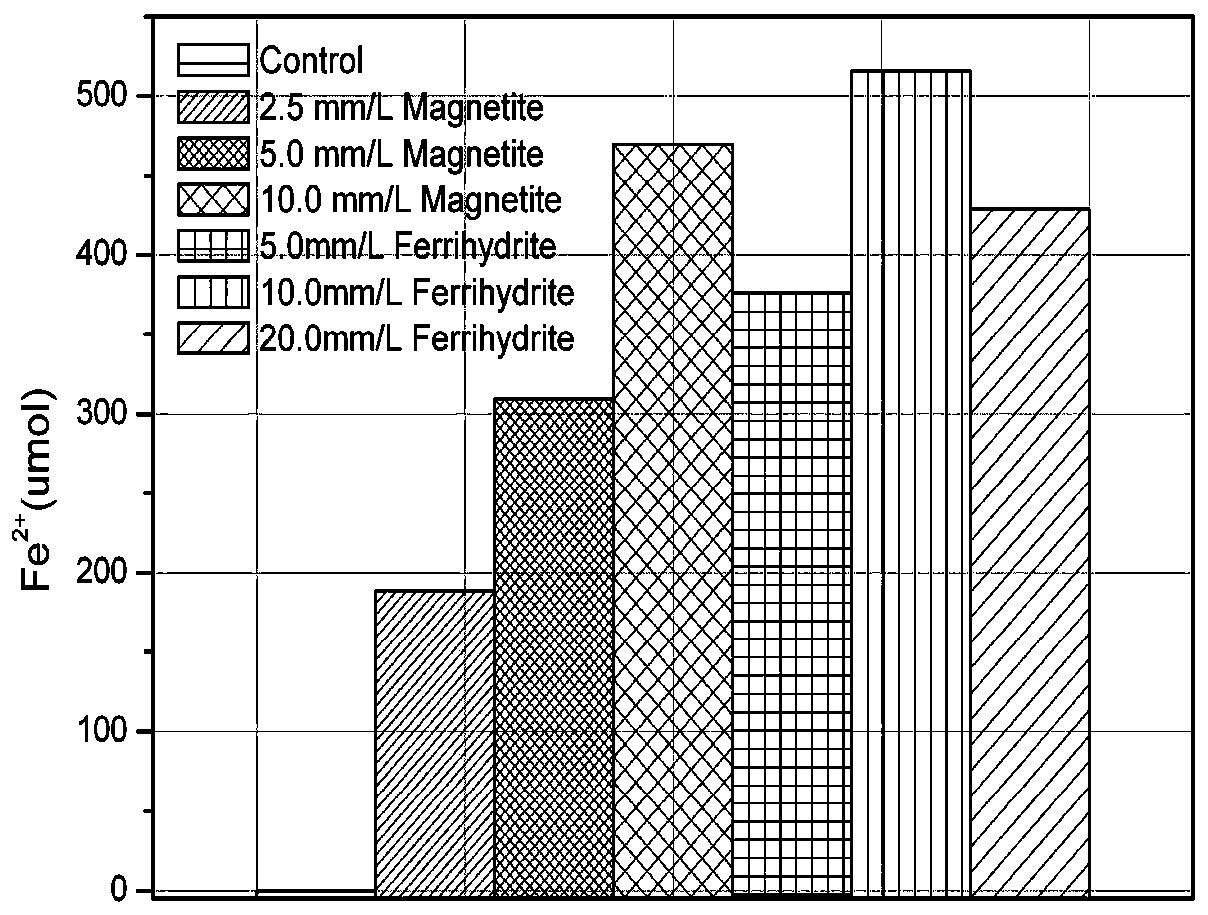Multifunctional Dizyme Clostridium and Its Application
A double-enzyme Clostridium, multifunctional technology, applied in the field of microorganisms, to achieve the effects of easy cultivation, fast growth and high hydrogen production rate
- Summary
- Abstract
- Description
- Claims
- Application Information
AI Technical Summary
Problems solved by technology
Method used
Image
Examples
Embodiment 1
[0034] Isolation and identification of Clostridium bifermentans EZ-1:
[0035] 1) Take the enriched Yellow River Delta soil supernatant, press 10-10 6 1-fold serial dilution, the inoculation loop was dipped to dilute 10 6 1 times the soil supernatant, marked on a PYG petri dish containing 2% agarose, and cultured in an anaerobic incubator at 30°C for 24h to 48h to obtain a single colony, which was round and white as figure 1 shown.
[0036] 2) Select a single colony and transfer it into 20 μL of sterile water, take 2 μL of the bacterial suspension for PCR amplification, and insert the remaining 18 μL into 10 ml of PYG liquid medium, culture at 30°C for 24-48 hours in the dark, and observe the bacterial morphology under an inverted microscope Such as figure 2 shown.
[0037] 3) PCR system: 2 μL buffer buffer; 2 μL dNTP substrate; 0.5 μL Taq enzyme; 0.5 μL Ba907r reverse primer; 0.5 μL Ba27F forward primer; 2 μL single colony suspension template; 2.5 μL sterile water.
[...
Embodiment 2
[0042] Anaerobic fermentation and product identification of Clostridium bifermentans EZ-1:
[0043] 1) Medium PYG: peptone: 0.2-5g / L, tryptone: 0.2-5g / L, yeast extract: 0.2-10g / L, glucose: 5-10g / L, CaCl 2 : 0.008g / L, MgSO 4 ·7H 2 O: 0.016g / L, K 2 HPO 4 : 0.04g / L, KH 2 SO 4 : 0.04g / L, NaHCO 3 : 0.04g / L, NaCl: 5g / L, L-cysteine: 0.25g / L; PH 6.3 (±0.2)
[0044] 2) Divide the above PYG medium into 25ml serum bottles, 10ml in each bottle, and add silica gel stoppers. Deoxygenation: evacuate for 6 minutes, flush with nitrogen for 30 seconds; pump for 3 minutes, flush with nitrogen for 30 seconds; pump for 1 minute, flush with nitrogen for 30 seconds. The aluminum cover is sealed, and sterilized by high-pressure steam at 121°C for 20 minutes.
[0045] 3) Inoculate Clostridium bifermentans EZ-1 into the deoxygenating syringe, the inoculum size is 1%, and the growth situation is measured, and the results are as follows: image 3 shown. Take 200 μ L of top gas for gas chromato...
Embodiment 3
[0048] Detection of dissimilatory iron reduction ability of Clostridium bifermentans EZ-1:
[0049] 1) Add respectively to the PYG medium after autoclaving: magnetite (Fe 3 o 4 ) final concentration is 2.5-10mm / L; final concentration of ferrihydrite (FeOOH) is 5.0-10mm / L; final concentration of ferric citrate is 10-40mm / L.
[0050] 2) Then inoculate Clostridium dizymogenum cultured to the logarithmic phase in the PYG liquid medium, the inoculum amount is 1%, 30° C., and cultivate in the dark for 48 hours.
[0051] 3) Use the phenanthrozine method to detect the changes in the concentration of ferrous iron in the culture medium before and after cultivation as follows: Image 6 shown.
[0052] It can be seen from the above figures that the bienzyme Clostridium has strong iron reduction ability, not only can reduce soluble and amorphous iron, but also can reduce crystalline iron in nano-magnetite. It can be seen that the Gram-positive bacterium Clostridium bienzyme of the bac...
PUM
 Login to View More
Login to View More Abstract
Description
Claims
Application Information
 Login to View More
Login to View More - R&D
- Intellectual Property
- Life Sciences
- Materials
- Tech Scout
- Unparalleled Data Quality
- Higher Quality Content
- 60% Fewer Hallucinations
Browse by: Latest US Patents, China's latest patents, Technical Efficacy Thesaurus, Application Domain, Technology Topic, Popular Technical Reports.
© 2025 PatSnap. All rights reserved.Legal|Privacy policy|Modern Slavery Act Transparency Statement|Sitemap|About US| Contact US: help@patsnap.com



